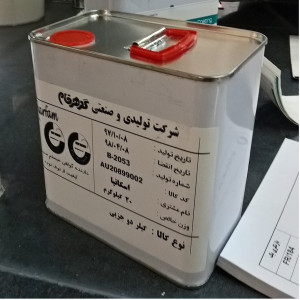| Goharfam industrial Manufacturing Company |

| No Title | 0.03 MB |
| Registration Date | 4 Jan 2020 |
| Revision Date | 4 Jan 2020 |
| Share |
Others Other products
Paint finishThis product provides a high adhesion to the substrate, flexibility and proper mechanical properties, high chemical resistance to materials such as skydrol oil and resistance to sagging. Further specifications are given in the table below.
Using paints, resins and variety of coatings is significant in different industries and pieces is significant for certain purposes, such as beauty, wear and corrosion resistance, or the enhancement of optical properties and conductivity and other properties. One of the most important applications of paints and resins is the coating of the body, the plant and the cabin of the aircraft. Proper chemical resistance, resistance to sagging, toughness, adequate strength, and resistance to thermal shock and ultraviolet radiation, are properties of the paints employed in the aircraft body coating. The paint used in the aircraft body should be sufficient to withstand chemical agents such as hydraulic oil (Skydrol) used in different parts of the aircraft, such as engine parts. Because in the case of leakage of this oil and contact with the body, the body’s paint will dissolve and give rise to problems in the performance of the aircraft. Nowadays, the use of nanoparticles to improve the viscosity and dispersion of applied paint on the body is an important tool in improving the airframe's coverage.
By introduction of Nano particles to paint’s formulation, its viscosity will increase and as a result paint’s sagging resistance will improve. In order to do this test firstly, paint containing Nano particles and witness paint (paint without Nano particles) were applied on two metal surfaces with thicknesses from 100 to 300 microns and then the surfaces were placed in vertical position. After a specific time period and superficial drying of the coatings, the last thickness which sagging is not happened is reported as sagging resistance.